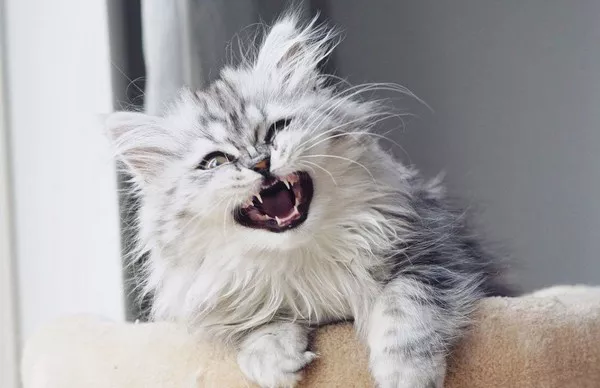Do Calico cats shed a lot? This question often resonates with prospective cat owners and enthusiasts who are considering bringing a Calico cat into their homes. Calico cats, known for their striking tri-colored coats, are a favorite among feline enthusiasts. However, the concern about shedding can be a pivotal factor in the decision-making process. In this comprehensive exploration, we will delve into the shedding tendencies of Calico cats, shedding light on the factors that influence their fur dynamics and providing practical insights for cat owners.
Understanding the Calico Cat
Calico cats are recognized by their distinctive coats featuring a captivating blend of three colors—white, black, and orange (or its diluted form, cream). This unique coat pattern is a result of specific genetic combinations, particularly linked to the X chromosome. Calico cats are almost exclusively female, with rare occurrences of male Calicos due to genetic anomalies.
See Also:Affectionate Nature of Calico Cats
The Nature of Cat Shedding
Before delving into the shedding tendencies of Calico cats, it’s crucial to understand the nature of cat shedding itself. Shedding is a natural and essential process for cats, irrespective of their breed or color. Cats shed to remove old or damaged hair, and the amount of shedding can be influenced by various factors such as age, health, and environmental conditions.
Factors Influencing Calico Cat Shedding
Genetics: The distinctive coat pattern of Calico cats is heavily influenced by genetics. While the genetics behind coat color don’t directly determine shedding, certain genetic factors may indirectly impact the texture and density of a cat’s fur, influencing shedding tendencies.
Age: Like all cats, Calico cats experience variations in shedding throughout their life stages. Kittens may have a different shedding pattern than adult cats, and older cats might shed more due to factors like changes in metabolism and hormonal fluctuations.
Health and Diet: The overall health of a Calico cat plays a significant role in its shedding tendencies. A well-balanced diet with essential nutrients can contribute to a healthier coat, reducing excessive shedding. Regular veterinary check-ups can also identify underlying health issues that might be contributing to shedding.
Seasonal Changes: Cats, including Calicos, often experience increased shedding during seasonal changes. This phenomenon is particularly noticeable during the transition from winter to spring when cats shed their winter coat to accommodate the warmer weather. Regular grooming during these times can help manage shedding.
Grooming Habits: The grooming habits of a Calico cat can impact shedding. Cats that groom themselves frequently may shed less as they remove loose fur during the grooming process. However, over-grooming can also be a sign of underlying health issues.
Environmental Factors: The environment in which a Calico cat lives can influence shedding. Indoor cats may shed more evenly throughout the year, while outdoor cats might experience more pronounced shedding during seasonal changes.
Managing Calico Cat Shedding: Practical Tips
Regular Brushing: Brushing your Calico cat regularly is a proactive way to manage shedding. This helps remove loose fur, preventing it from accumulating around your home. Choose a brush that suits your cat’s coat length and texture.
Balanced Diet: Providing a high-quality, balanced diet is essential for the overall health of your Calico cat, including its coat. Consult your veterinarian to ensure that your cat’s nutritional needs are met.
Supplements: In some cases, supplements such as omega-3 fatty acids can be beneficial for maintaining a healthy coat and reducing shedding. Consult your veterinarian before introducing any supplements to your cat’s diet.
Hydration: Ensuring your Calico cat stays well-hydrated is crucial for a healthy coat. Cats that are adequately hydrated are less likely to experience dry, flaky skin, which can contribute to excessive shedding.
Regular Veterinary Check-ups: Schedule regular check-ups with your veterinarian to monitor your Calico cat’s overall health. Addressing any underlying health issues promptly can have a positive impact on shedding.
Climate Considerations: Be mindful of seasonal changes and adjust your grooming routine accordingly. During peak shedding seasons, increase the frequency of grooming to manage the excess fur.
Stress Management: Cats, including Calicos, may shed more when stressed. Create a calm and enriching environment for your cat, providing hiding spots, toys, and interactions to alleviate stress.
Proper Hygiene Practices: Keep your home clean by vacuuming regularly and washing cat bedding. This helps manage loose fur and prevents it from accumulating in your living spaces.
Consulting a Professional Groomer: If you find it challenging to manage your Calico cat’s shedding on your own, consider consulting a professional groomer. They can provide expert advice and grooming services tailored to your cat’s specific needs.
Patience and Understanding: Shedding is a natural process, and it’s essential to approach it with patience and understanding. Be consistent with grooming practices, monitor your cat’s health, and enjoy the unique beauty of your Calico companion.
Conclusion
In conclusion, the shedding tendencies of Calico cats are influenced by various factors, ranging from genetics to environmental conditions. By understanding these factors and implementing practical grooming and care strategies, cat owners can effectively manage shedding and ensure the well-being of their beloved Calico companions. Embracing the unique charm of Calico cats, including their tri-colored coats, becomes a delightful journey when coupled with proper care and attention to their grooming needs.
Related Topics:
What Were Calico Cats Bred For?
When Do Calico Cats Go Into Heat?
When Does a Calico Cat Stop Growing?






















